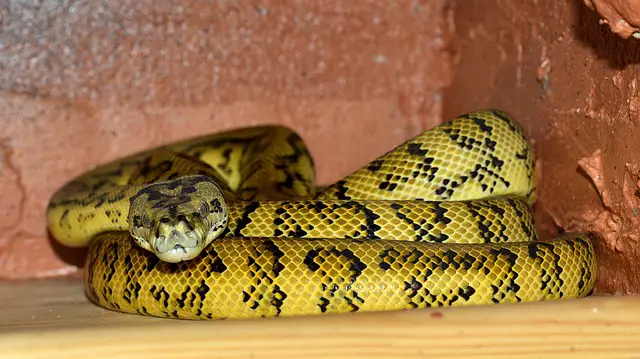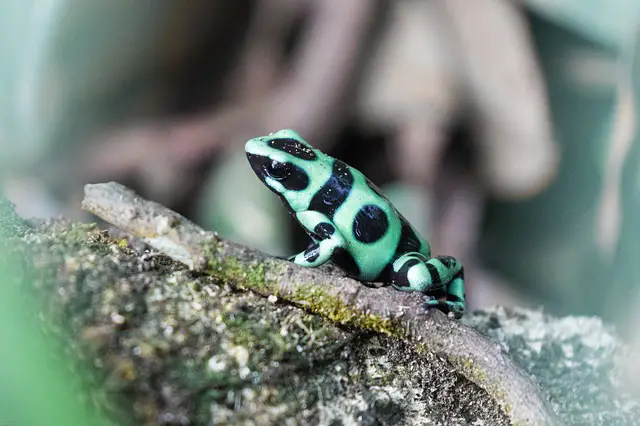Snakes are fascinating creatures that have captured the attention of humans for centuries. One of the most intriguing behaviors of snakes is their tendency to curl up into a tight ball.
This behavior can be seen in various snake species, from the smallest garter snake to the largest anaconda. But why do snakes curl up?
Understanding snake behavior is key to answering this question. Snakes are cold-blooded reptiles that rely on their environment to regulate their body temperature.
Snakes can conserve heat and protect themselves from predators when they curl up. This behavior also allows them to hide and remain undetected, making it easier to ambush prey.
Snake anatomy plays a role in their curling behavior as well. Snakes have a unique skeletal structure that allows them to bend and contort their bodies in ways other animals cannot.
They also have specialized muscles that enable them to contract and relax different body parts independently, which allows them to curl up tightly and hold that position for extended periods.
Key Takeaways
- Snakes curl up to conserve heat, protect themselves from predators, and ambush prey.
- Their unique skeletal structure and specialized muscles enable them to contort their bodies into tight balls.
- Understanding snake behavior and anatomy is vital to understanding why they curl up.
Snake Anatomy and Curling Up
Snakes are fascinating creatures known for their unique ability to curl into a tight ball.
This behavior is often seen in snakes when threatened or trying to conserve body heat. In this section, we will explore the anatomy of snakes and how it allows them to curl up.
Musculoskeletal System
The musculoskeletal system of a snake is uniquely adapted to allow for curling up. Snakes have a long, flexible spine that is made up of many vertebrae.
Unlike other animals, the vertebrae of a snake are not fused, which allows them to move independently of each other.
This flexibility allows snakes to curl into tight balls and makes them excellent climbers.
Snakes also have powerful muscles that run along the length of their body.
These muscles are responsible for the snake’s movement, allowing it to contract and expand its body. When a snake curls up, these muscles contract, pulling the vertebrae closer and allowing the snake to form a tight ball.
Nervous System
The nervous system of a snake is also essential in allowing it to curl up. Snakes have a specialized group of nerves called the sympathetic nervous system that controls their fight-or-flight response.
When a snake feels threatened, this system is activated, causing the snake to curl up into a tight ball.
In addition, snakes have a unique organ called the Jacobson’s organ, which is located in the roof of their mouth.
This organ detects chemical signals in the environment, such as the scent of prey or predators. When a snake curls up, it can use this organ to detect any potential threats in its surroundings.
In conclusion, the ability of snakes to curl up is a result of their unique musculoskeletal and nervous systems. These adaptations allow snakes to protect themselves from predators and conserve body heat.
Types of Snakes and Their Curling Behavior
Venomous Snakes
Venomous snakes are known for their deadly bite and their unique curling behavior. When threatened or preparing to strike, venomous snakes such as cobras and vipers will curl their bodies into an S-shape.
This allows them to strike at their prey or attacker with precision quickly. The S-shape also makes it easier for them to retreat quickly if needed.
Constrictors
Constrictor snakes, such as pythons and boas, use their powerful muscles to wrap themselves tightly around their prey and squeeze until the prey is suffocated.
These snakes often curl their bodies around their prey to keep it in place while constricting. This curling behavior allows them to exert maximum pressure on their prey and prevent it from escaping.
Colubrids
Colubrids are a diverse group of non-venomous snakes, including garter snakes and rat snakes.
While they do not have the deadly bite of venomous snakes or the strength of constrictors, they still exhibit curling behavior.
Colubrids will often curl up into a ball when threatened or to conserve heat. This behavior makes them less vulnerable to predators and helps them retain body heat in cooler environments.
In conclusion, different types of snakes exhibit other curling behaviors depending on their species and needs.
Venomous snakes use the S-shape to strike at prey or attackers, constrictors use their curling behavior to exert maximum pressure on their prey, and colubrids curl up into a ball for protection and heat conservation.
Impact of Environment on Snake Curling Behavior
Temperature and Weather
Snakes are cold-blooded, which means that the environment regulates their body temperature. When the temperature drops, snakes may curl up to conserve heat and maintain their body temperature.
This behavior is widespread in colder climates or during the winter months.
On the other hand, snakes may also curl up to protect themselves from the heat and prevent dehydration when the temperature is too hot. This behavior is widespread in deserts and other arid environments.
In addition to temperature, weather conditions can also affect snake curling behavior.
For example, snakes may curl up during heavy rain or flooding to avoid being swept away by the water or to prevent drowning.
Predators and Threats
Snakes may also curl up as a defensive mechanism against predators or threats. When threatened, some snakes curl up into a ball to protect their vital organs and make themselves appear larger and more intimidating to predators.
In some cases, snakes may also use their curled-up position to camouflage themselves and blend in with their surroundings, making it more difficult for predators to spot them.
Overall, snake curling behavior is influenced by various environmental factors, including temperature, weather, and the presence of predators and threats.
By curling up, snakes can protect themselves and maintain their body temperature, ensuring survival in various environments.
Conclusion
In conclusion, snakes curl up for various reasons, including thermoregulation, protection, and hunting. By curling up, snakes can conserve heat, hide from predators, and ambush prey. Additionally, some species of snakes curl up as a defensive mechanism, making themselves appear larger and more intimidating to potential threats.
While curling up may seem simple, it is a complex behavior influenced by various factors, including the species of snake, the environment, and the snake’s behavior patterns. As such, it is essential to approach the study of snake behavior with a nuanced understanding of the many factors that can influence it.
Overall, the study of snake behavior is an essential area of research that can help us better understand these fascinating creatures and their place in the ecosystem. By continuing to study and learn about snakes, we can improve our understanding of the natural world and work to protect these critical species for future generations.
Frequently Asked Questions
Why do snakes curl up when threatened?
When a snake feels threatened, it may curl up into a ball to protect its head and vital organs. This defensive posture can also make the snake appear larger and more intimidating to potential predators.
What is the meaning behind a curled-up snake tattoo?
A curled-up snake tattoo can symbolize protection, transformation, and rebirth. In some cultures, the snake is seen as a powerful and sacred animal representing healing and wisdom.
Do ball pythons always curl up into a ball?
Ball pythons are known for their ability to curl up into a tight ball when they feel threatened or stressed. However, they may also stretch out and explore their environment when they feel safe and comfortable.
What are the signs of a happy ball python?
A happy ball python will be active, alert, and curious about its surroundings. It will have a healthy appetite and shed its skin regularly. A snake constantly hiding or refusing to eat may be stressed or unhappy.
How does a snake warn you before attacking?
Snakes may give warning signs before attacking, such as hissing, flattening their bodies, and vibrating their tails. However, not all snakes will give a warning before striking, so it’s essential to be cautious around all snakes.
Can snakes curl up for exercise purposes?
Snakes do not curl up for exercise purposes. Instead, they use their muscles to slither and move through their environment. However, some snakes may occasionally curl up to rest or conserve energy.









